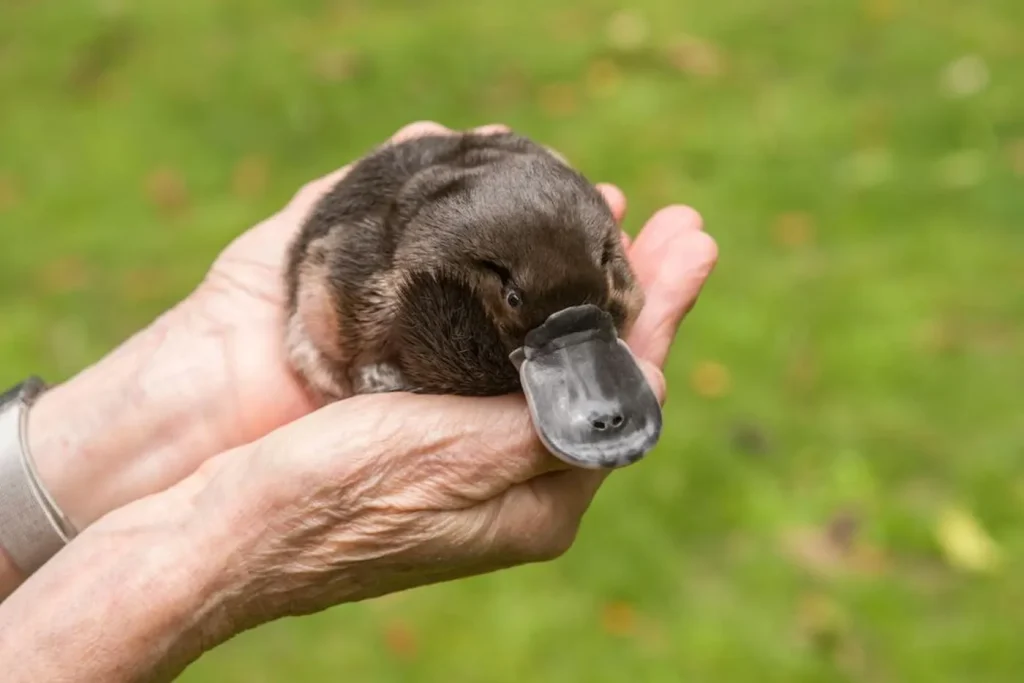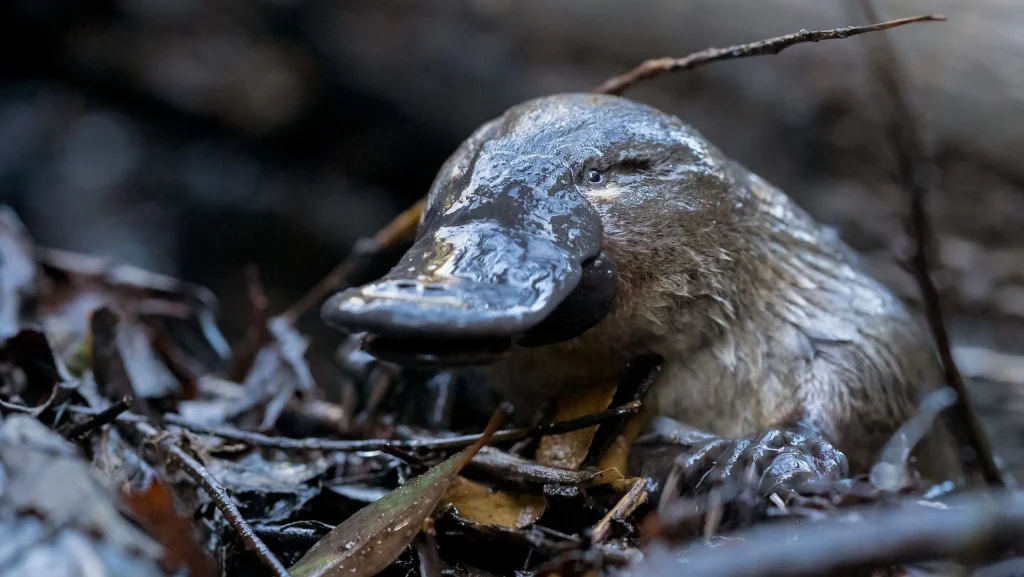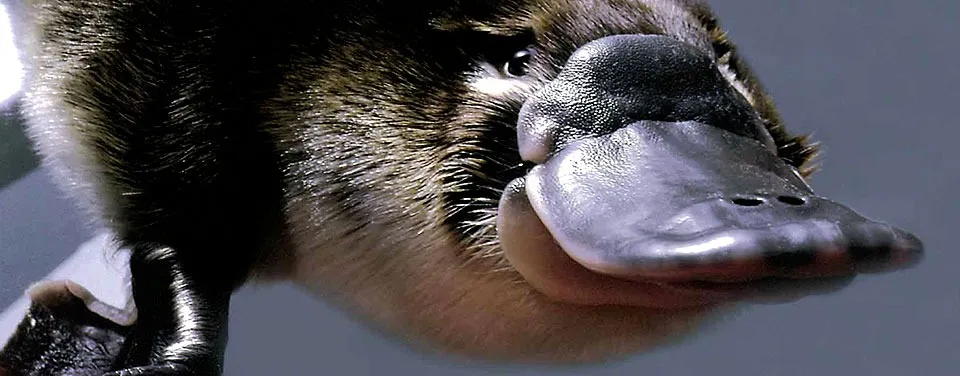Why Is Duck-Billed Platypus a Mammal? The duck-billed platypus is an amazing animal that is difficult to classify. Even though it is a mammal, it lays eggs, a characteristic usually associated with reptiles. Below, we’ll discover why it’s still considered a mammal.

What is a Duck-Billed Platypus?
Many people consider the duck-billed platypus to be among the most unusual mammals on the planet, and it is a very mysterious animal.
This semi-aquatic native to Australia is well-known for having a distinctive set of traits.
The platypus defies classification with its flat, rubbery bill that resembles a duck’s, webbed feet for effective swimming, and a beaver-like tail for propulsion and fat storage.
Its mystery is increased by the fact that, unlike most mammals, it lays eggs—a characteristic more commonly associated with birds and reptiles—instead of giving birth to live offspring.
Physical Characteristics of the Duck-Billed Platypus
The platypus is an incredibly rare animal with a characteristic look.
Bill: The platypus’s flat, rubbery, duck-like bill is possibly its most recognizable characteristic. Its abundance of sense receptors aids in the platypus’s submerged prey localization.
Physique: The platypus’s streamlined, swimming-specific physique resembles that of a beaver.
Feet: Webbed on both the front and rear surfaces, these feet are effective paddles for aquatic life. Interestingly, when the platypus is on land, its webbed feet retract between its toes.
Tail: The platypus resembles a beaver in that it has a broad, flat tail. This tail stores fat reserves in addition to being used for propulsion in the water.
Fur: The platypus is better insulated in cold water thanks to its thick, water-resistant fur.
Electroreception: Only found in mammals, the platypus’s bill contains electroreceptors that enable it to sense the electric fields produced by its food.
Habitat of the Duck-Billed Platypus
Eastern Australia, including Tasmania, is home to the endemic duck-billed platypus. Freshwater habitats are where they are mostly found.
Streams and Rivers: These are the main habitats for platypus. They choose streams that are abundant in aquatic vegetation and have clean, clear water.
Tunnels: Because they are semi-aquatic, platypuses spend a large amount of their time in tunnels that are buried along riverbanks. These tunnels offer safety from predators, a location to raise young, and a place to live.
Riparian Zones: The verdant, riverbank environments are essential to platypuses. They offer nesting places, food, and cover.
Distribution of Duck-Billed Platypus
The unique Australian platypus is reliant on freshwater rivers, streams, and bodies of water.
It can be found all across Tasmania, as well as in eastern, central, and southwestern Victoria, as well as eastern Queensland and New South Wales. It is unknown how far west the range extends.
The Mount Lofty Ranges and Adelaide Hills of South Australia were formerly home to the species. Except for the introduced population on Kangaroo Island’s western tip, it is currently extinct in that state.
Notwithstanding multiple fruitless attempts to introduce the animal to Western Australia, there is no proof that it ever existed there natively.
The Platypus’s occurrence is quite continuous in certain catchments within its current range, but discontinuous in others.
What Do Duck-Billed Platypus Eat?
The Platypus primarily eats a variety of aquatic invertebrates at night. The animals migrate different distances during their 10- to 12-hour daily foraging sessions, depending on the individual and where they are in their range.

When foraging underwater, the animal covers its eyes, hearing, and nostrils. Its primary sensing organ is its bill, which has electroreceptors and pressure-sensitive sensors.
Although the exact method by which the Platypus locates and sorts small prey from the substrate using its beak is yet unknown, larger prey is collected one at a time.
RELATED ARTICLES:
- Do Elephants Really Eat Peanuts?
- What Do Cone Snails Eat?
- Why Are Cone Snails Dangerous?
- What Do Star-Nosed Moles Do To Survive?
Why Is Duck-Billed Platypus a Mammal?
The platypus is categorized as a mammal even though it lays eggs because of a few important traits:
Hair: A distinguishing feature of mammals, fur is possessed by platypus.
Mammary Glands: Another characteristic of mammals, these glands produce milk to feed their young.
Warm-blooded: Platypuses can control their internal body temperature since they are endothermic.
These characteristics put them in the mammal category along with their distinct evolutionary history.
It’s crucial to remember that platypuses are members of the class of mammals known as monotremes, or egg-laying mammals.
As a result, they belong to one of the most archaic lineages of mammals, providing important insights into the evolution of mammals.
Are Duck-Billed Platypus Dangerous to Humans?
Indeed, male platypuses pose a threat to people. Platypuses are wary of conflict, although their hind legs are covered in poisonous spikes on the males.
Although they can also be used defensively, these spurs are mainly used for competition during mating season. Although the venom is not fatal to humans, it can produce severe pain and swelling.
Because they lack these spurs, female platypuses are safe. It is imperative to keep a safe distance from platypuses and to never come into contact with them.
The platypus is undoubtedly a miracle of evolutionary biology. Its ability to lay eggs may seem to contradict the classification of mammals, yet hair, mammary glands, and warm-blooded physiology unambiguously place it in the mammal family.
This extraordinary animal provides a living connection to our distant relatives the mammalian family and provides priceless insights about their evolutionary history.

